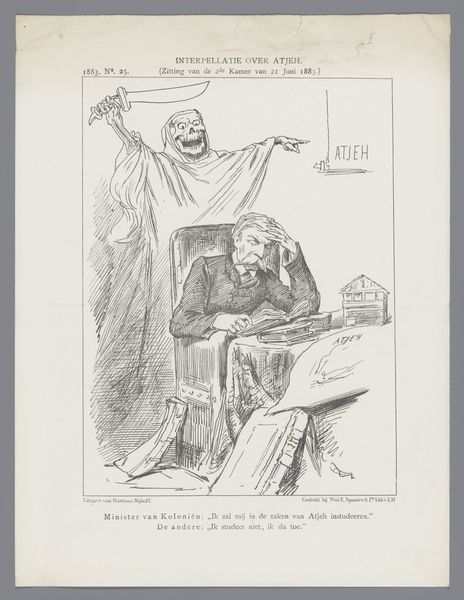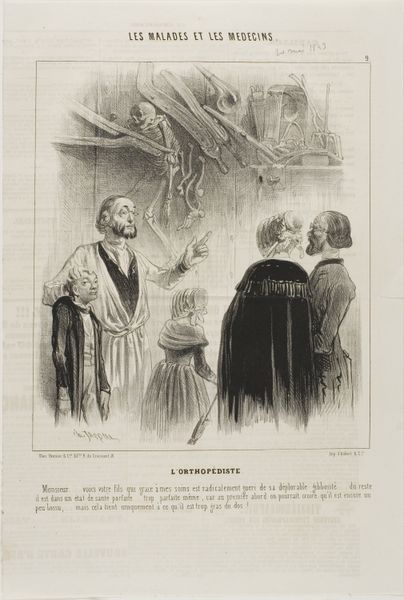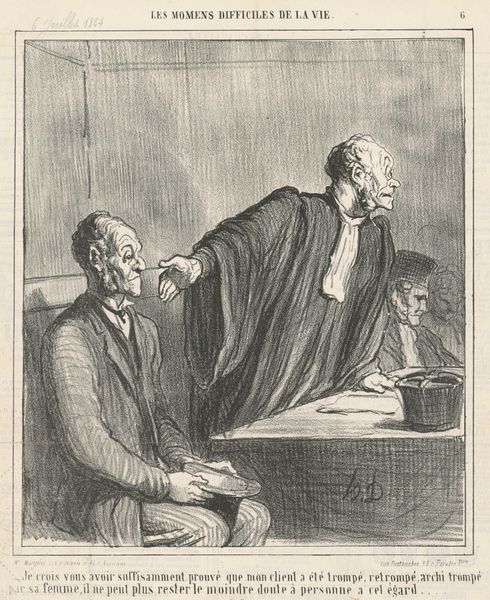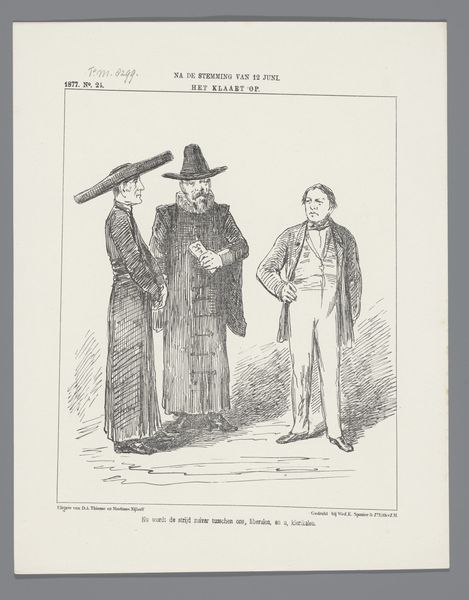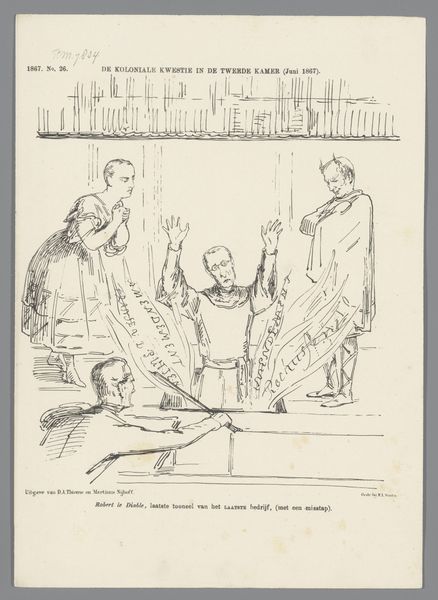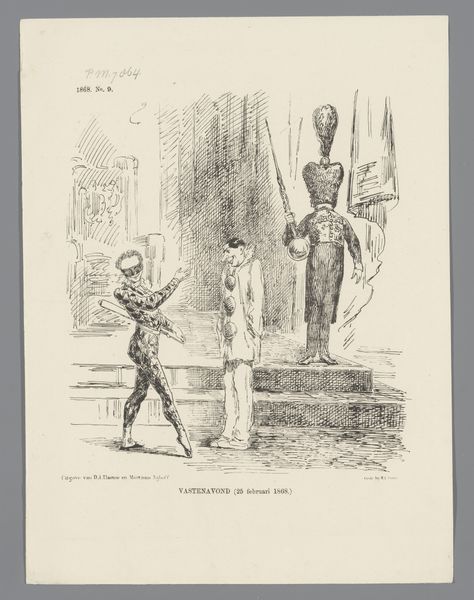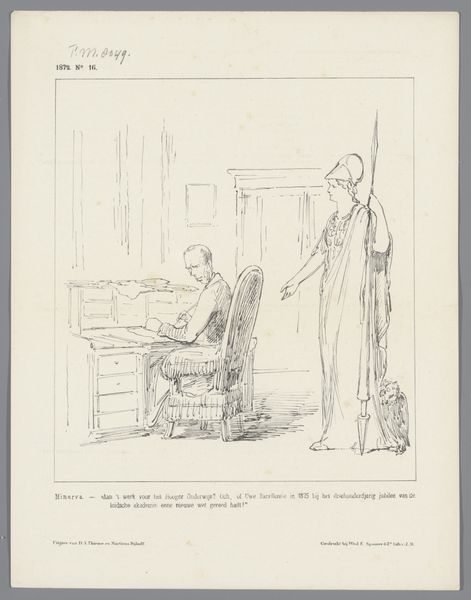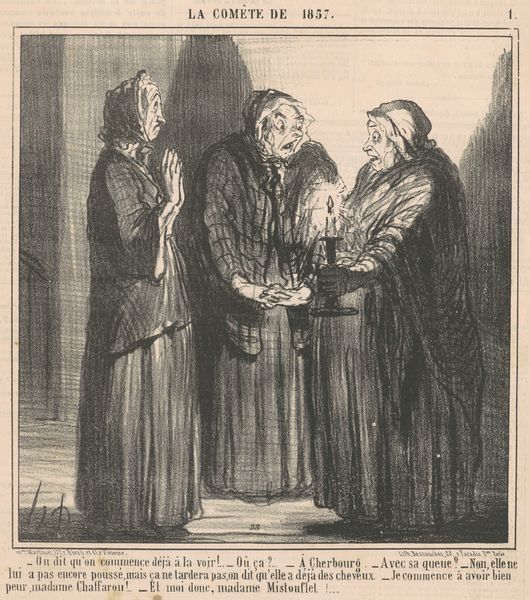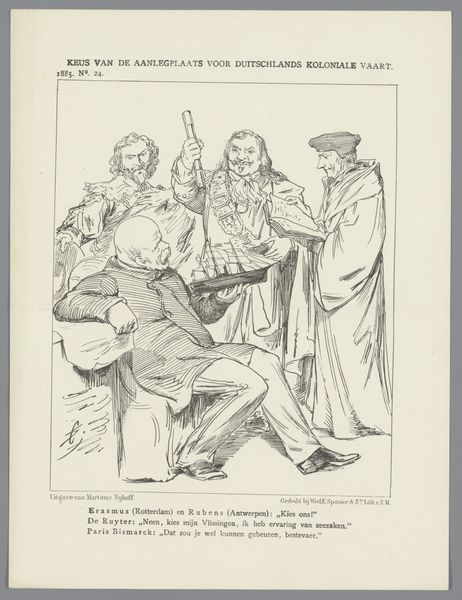
Dimensions: height 275 mm, width 215 mm
Copyright: Rijks Museum: Open Domain
Editor: This is a pen drawing from 1867, "Spotprent over de afschaffing van de doodstraf" by Johan Michaël Schmidt Crans. The image portrays a man at a desk, seemingly unaware of the looming figure of Death behind him, who is carrying a scythe and a collection of shrunken heads. What strikes me is how subtly critical it seems to be of those debating the abolishment of the death penalty. How do you interpret its message? Curator: It's more than subtle, I would argue; it's a very potent and visual critique. Consider the historical context: this was produced during a pivotal debate on capital punishment. The artist is not just illustrating a scene but actively engaging in a political discourse. The romantic style enhances the emotional weight. Notice how the "rational" politician is engrossed in his work, oblivious to the consequences of his choices, embodied by the grim reaper. Editor: I see what you mean. The man is literally in the dark. And those "souvenirs" held by Death are gruesome. What does it say about how the artist felt? Curator: It suggests the artist viewed the continued use of the death penalty as barbaric. These severed heads aren't just trophies, but accusations. The noose hanging from above could indicate a choice – a societal decision. A decision to embrace enlightenment values, or to hold onto a violent past. How does understanding this change your perception? Editor: It clarifies the power dynamics. It is a visual argument against the status quo, leveraging emotional impact to promote change. This transforms the cartoon into a call for moral progress and the abolition of institutionalized violence. Curator: Precisely. Art like this becomes a vital tool in shaping public opinion and challenging entrenched systems of power. Looking at it now, what would you say you've learned? Editor: It's interesting to learn how political cartoons use emotion and symbolism to impact historical and social events. This helps me understand how artists function as social commentators.
Comments
No comments
Be the first to comment and join the conversation on the ultimate creative platform.
